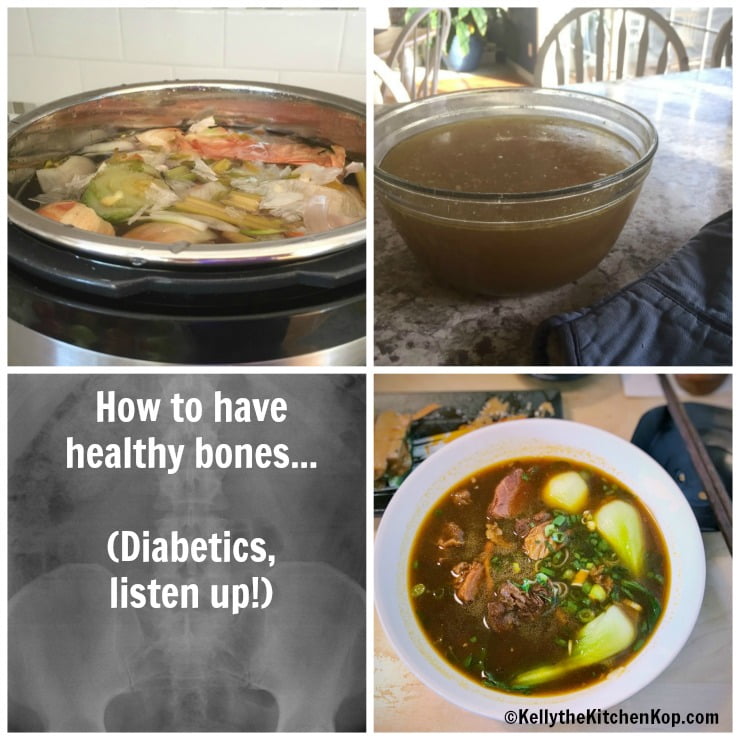
If you really want to help your bones go the long-haul you'll want to read closely.
When I first cracked open the Nourishing Broth book, I read something that was very upsetting!
“Given all the calcium in bone, it's reasonable to think broth would be an excellent source of this important mineral. Many people even claim its calcium content rivals that of dairy foods and recommend bone broth as a good substitute for people who cannot tolerate milk or other dairy products. In fact, the level of calcium in broth does not come close.” (It goes on to tell about the studies done to confirm this, including a recent analysis done on broth made by my friend, Kim Schuette.)
“The low calcium figures appear to be true even when long-term cooking softens and largely dissolves the bone. What's more, these figures are for broth made with the help of vinegar to pull minerals from the bone.”
WHAT?!
For years now I've added a splash of ACV to the pot, along with the bones, filtered water and veggie scraps, in order to draw more minerals into the broth, and now I find out it's not a significant source of minerals after all?!
I felt better as I kept reading…
“It appears the best way to increase the calcium content of the broth is to include calcium-rich vegetables while making the broth (which is why those carrot, onion, garlic, and celery veggie scraps are so important), and milk or cream in broth-based sauces. (Such as in recipes like stroganoff or alfredo, etc.)
So it turns out that even though there are not large amounts of minerals in broth, the trace minerals that ARE found there are so easily absorbed that it's still a good source of minerals, especially with the calcium-rich veggie scraps mentioned above or the dairy that's included with the broth in creamy sauces…
“Despite its low calcium content, broth apparently supports bone health. While levels of calcium and trace minerals may be low, they are nonetheless easily assimilated and present in appropriate ratios for bone building. In contrast, bone-building supplements are often formulated with high levels of calcium that are hard to absorb and missing full complements of bone-building trace-minerals. Bone, after all, is not built on calcium alone.”
More from the WAPF:
“As the remarkable properties of vitamins have revealed themselves to investigators, so too have those of the various minerals in our food and water. The seven macrominerals– calcium, chloride, magnesium, phosphorus, potassium, sodium and sulphur–now share the research spotlight with a longer list of essential trace minerals. These are needed only in minute amounts, but their absence results in many disease conditions.” (Source: Weston A. Price Foundation)
The other larger reason broth can really help your bones:
“The larger reason broth supports bone building is its high collagen content. Broth, of course, contains collagen dissolved not only from the bone itself but also from the attached skin and cartilage. The basic building blocks of bone are collagen fibrils that form a lattice-work for deposition of calcium phosphate and other minerals. The collagen cross-links are more important for whole bone strength and fracture resistance than mineral levels and patterns.”
Why is collagen such a superfood? Check out this list of benefits:
- Improves Skin Health
- Promotes Younger, Firmer Skin
- Supports Joint Health
- Improves Gut Function and Digestion
- Keeps Excess Inflammation in Check
- Builds and Restores Muscle
- Supports a Healthy Metabolism
- Keeps Appetite In Check
- Promotes Healthy Brain Function
- Promotes Deeper Sleep
(Source.)
That's why I add extra collagen in my cooking every chance I get.
Since collagen is so beneficial for so us, not just to help your bones but in many other ways, and because I never know for sure if I'm using the right bones or simmering them long enough, etc., I like to just slip in a scoop of this grass-fed collagen to my broth, soups, stews, sauces, smoothies, even homemade ice cream, as I explained in this superfoods post.
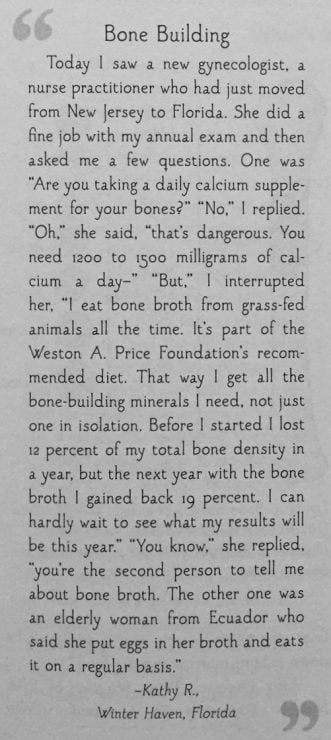
Why diabetics need to pay special attention to this information!
Diabetics are especially prone to brittle bones so they're more susceptible to breakage…
“Diabetics may suffer from poor bones, not because of low mineral density but because their collagen is damaged by the advanced glycation end-products (AGEs) created when blood sugar levels are chronically high.”
“Although most published collagen studies have focused on osteoarthritis, Milan Adam, DSci of the Institute of Rheumatism Research in Prague (1928-2008), studied 120 osteoporosis patients over a period of three years. He treated half with calcium and half with collagen hydrolysate. The breakdown of substances indicating loss of collagen and bone mass were significantly lower in the collagen hydrolysate group than in the calcium group. Best of all, collagen hydrolysate reduced the likelihood of bone fractures significantly. A few years later he published a study on 108 post-menopausal women with osteoporosis and bone mineral density lower than 80%.”
With osteoporosis a threat for forty-four million American men and women over the age of fifty, these findings on collagen need to be taken seriously. For years, osteoporosis prevention relied on calcium alone. The focus then shifted to masses doses of vitamin D plus calcium, perhaps with a complement of trace minerals. But if we look back at the diets of traditional people who retained strong, flexible bones throughout long and productive lives, it's apparent the answer lies in nourishing food, not in pills. While it's fortunate that modern science supports bone building with food-based collagen hydrolysate and gelatin, the better-and tastier-solution is daily bowls of nourishing broth.”
IMPORTANT:
Have you seen this post: Are you Taking Vitamin D or Calcium? What You MUST Do First (Scary: My doc didn’t even know):
Also see my other post about bone health:
One more thing you need to know: Watch out for broth made with bones from conventionally-raised animals!
One molecule we can predict to be severely affected by glyphosate substitution for glycine is collagen, the most abundant protein in the body. Collagen is essential for cushioning the joints, and, when it is defective due to glyphosate contamination, it performs poorly in its job, leading to joint pain and tendonitis, among other things. This can explain why so many people today suffer from chronic pain conditions such as shoulder pain and back pain, and why we have an epidemic in opioid drug abuse. Foods that contain high amounts of gelatin can be expected to be highly contaminated with glyphosate, and this includes bone broth, which would ordinarily be very nutritious. One also has to consider the implications of glyphosate contamination in gel capsules.
You can help reduce glyphosate exposure for your family by switching to a 100 percent certified organic diet. More generally, there is an urgent need for government action to ban glyphosate in order to protect our population from harm. Source: Stephanie Seneff's article: Glyphosate in Collagen.
A note from Sally Fallon-Morell about supplement gel caps:
Gelatin is also the main constituent of gel caps, which have become a standard way of packaging both pharmaceutical drugs and nutritional supplements such as fish oil. I would predict that any nutritional supplement housed in a gel capsule is going to cause you much more harm than good, because whatever benefit the contents provides is more than offset by the damaging effects of the glyphosate. This also means, of course, that bone broth, a highly nutritious food, must be made from grass-fed beef rather than from the large confined animal feeding operations (CAFOs).
One solution is to be sure that your supplements use vegan gel caps, which are made from cellulose, a plant-derived polysaccharide that would probably be much less at risk of glyphosate contamination.
So I checked with the supplements I recommend and that I take myself…
Perfect Supplements assured me that they do not use gelatin caps in any of their Perfect Supplement products. All are either cellulose, pullulan, or carrageenan. I also confirmed that the probiotics and K2 caps that I recommend are made from cellulose.
Last thing: What is the difference between gelatin and collagen? And other words you may wonder about…
“When it comes to science, medicine, and biology the rule seems to be, the more names you can give to the same basic thing, the better. So, take a swig of your coconut oil infused green tea and let’s get this terminology out of the way…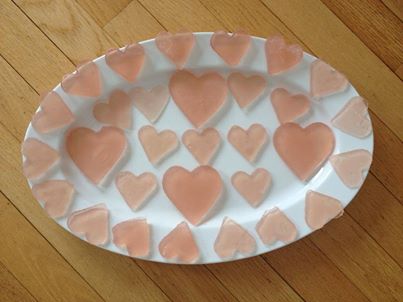
- Gelatin – collagen is the protein found in animal bones and the connective tissue around the bones. Gelatin is what you get when you cook collagen. Grandma’s feel good chicken broth? It contained gelatin that came from cooking the bones and turning the collagen into gelatin. (I use gelatin to make things like this homemade finger jello!)
- Hydrolyzed Collagen – prefer your collagen bathed rather than cooked? Hydrolyzed Collagen is simply collagen that is bathed in enzymes, which breaks the protein down into smaller pieces, giving it a lower molecular weight and making it easier for the body to absorb and digest. Hydrolyzed Collagen has the highest bioavailability of any form of collagen.
- Collagen Hydrolysate – the exact same thing as Hydrolyzed Collagen…because scientist like words that begin with hydro???
- Collagen Peptides – basically the same as Hydrolyzed Collagen, which is of course the same as Collagen Hydrolysate. Collagen Peptides is used to denote that the Collagen is made up of shorter chain amino acids, which is what you get once you pass the collagen through the hydrolysate process – the enzymatic bath.” (Read this source page for more details.)
Don't want to make broth yourself? Or want some to keep on-hand for when you're running short?
Now that this broth is available–I keep it on hand because it's shelf-stable and it's in my pantry for the days that I'm too crunched for time to even deal with the frozen broth from my freezer. They make it just like I do and it tastes great too: made in the USA from 100% grass-fed cattle, slow simmered in organic vegetables with a dash of apple cider vinegar to extract more collagen.
I hope I covered everything, if you have any questions just ask in the comments. If I don't know, I can ask people who are a lot smarter than I am! 🙂
More you might like:
- Where to get my favorite grass-fed collagen and it's certfied glyphosate-free! (Don't forget to use the code KOP for a discount.)
- Here's the gelatin I use in my delicious cranberry gelatin! You can also use that to make homemade gummies or homemade jello!
- Read my post about the Nourishing Broth book here: What's wrong with my broth?! What to do if your stock won't gel and should you boil or simmer broth?
- Again, here's where to order the bone broth online that is made JUST like mine and is shelf-stable! Great for the days that you just need to throw dinner together quick and no time to deal with the frozen broth in your freezer. (Or if you drink it a lot and want to keep some handy.)

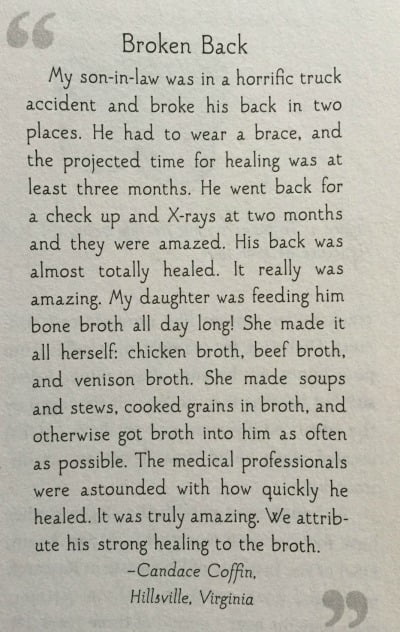
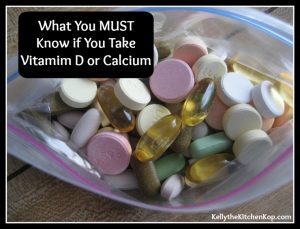
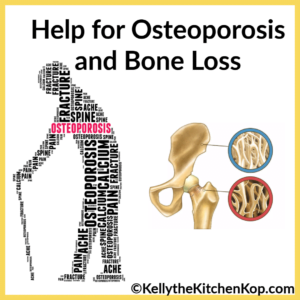

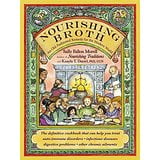
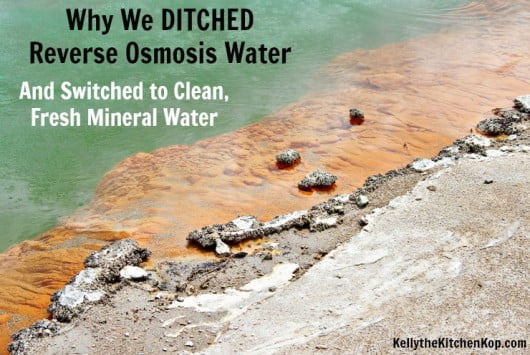
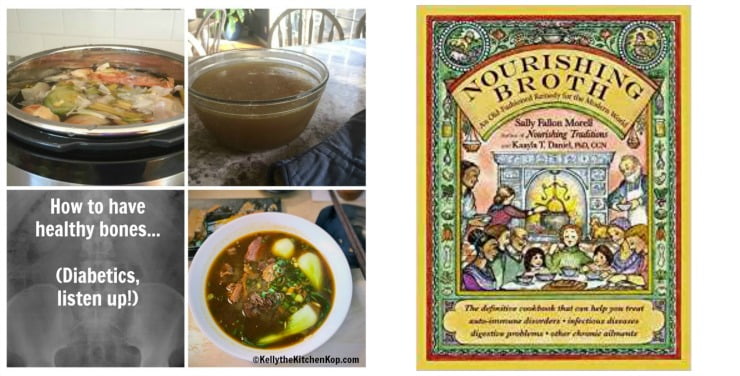

Linda says
You mention carrageenan above as okay. I thought this is of concern as well. https://www.drweil.com/diet-nutrition/food-safety/is-carrageenan-safe/ There are other articles as well.
Nanci Garon says
Does the hydrolyzed collagen negatively affect those sensitive to MSG and excitotoxins in general? I have been told never to ingest anything hydrolyzed. I would like to take collagen though.
KitchenKop says
Hi Nanci,
I asked Perfect Supplements and here’s what Dan said, “If she has been told to not have anything Hydrolyzed, then she should avoid Hydrolyzed Collagen. In that case, maybe recommend our Perfect Bovine Gelatin which is not hydrolyzed.
However, keep in mind that it is a common misconception that Hydrolyzed Protein contains MSG, but it is NOT true. I recommend people check out this post from Whole Foods about Hydrolyzed Protein and how it does NOT contain MSG – https://www.wholefoodsmarket.com/blog/whole-story/myths-and-misconceptions-msg
MSG (Monosodium Glutamate) is the sodium salt of glutamic acid. Glutamic acid is a non-essential amino acid and found in numerous foods. Fun fact to throw out at your next dinner party – we all have about 4.4 pounds of Glutamic Acid in our body.
MSG is produced outside the body and often in a synthetic environment. Chemical formula C5H8NNaO4.
Glutamic Acid has a chemical formula of C5H9NO4. So, not exactly the same thing.
The problem with MSG is it is manufactured to have very high levels of Glutamic Acid salt. MSG – highly concentrated and at times synthetically processed – is certainly troubling.
We totally agree that the chemical process used to make MSG is troublesome and we would NEVER add MSG to our product. Our hydrolyzed collagen is 100% natural, and like many other proteins, it contains glutamic acid. Again, this is NOT the same as MSG (the Whole Foods article explains it clearly).
I also want to point out that even if you have Gelatin or Collagen that is not hydrolyzed – it will be hydrolyzed by the acids in your stomach. This is just the natural process of breaking down protein.
We want to be completely transparent, here is our full lab testing showing the amount of Glutamic Acid – https://www.perfect-supplements.com/pdfs/CollagenTestResults.pdf If anyone has a sensitivity to Glutamic Acid and is looking to limit it in their diet, they may use this information to make that determination. I just want to be clear that a naturally hydrolyzed protein (which our Collagen is) is not the same as MSG.
If anyone has additional questions – feel free to contact us and we would be happy to discuss further.
Thanks,
Dan”
Hope that helps!
Kelly
Nanci says
Thanks so much, Kelly. I have been told to avoid all glutamtes or glutamic acid. Our family has a genetic mutation that affects the ability to detox among other things,
Things that other people are fine with can cause severe symptoms for us.
Nanci
Sarah says
Wow Kelly, that was a packed article that took a lot of time to write. I have had this book for a year+. I have not picked it back up since the first week. We are off on a vacation, I think it is making its way into my bag for some reading! Thank you.
Janet DeFreitas says
Thank you, Kelly for the information and explanations! I wish I had pushed my bone broth on my son every day after he broke a bone in his hand. I do have a question. When I make homemade bone broth, I dutifully add the apple cider vinegar. After refrigeration, my broth does not gel. Before learning to add the ACV, it would always gel. I’m thinking about forgetting the ACV for the sake of getting the gelatinous texture I want. Should I use ACV all the time anyway?
KitchenKop says
Hi Janet, I’m not sure why it gelled before but not now, but I don’t think it’s the ACV — could you be using different bones? In the book it says there are a few things that affect how much it gels, it depends on the type of bones, your cooking temp (if it’s too high it won’t gel, just get it to a roll and then turn on a low simmer), how long it cooked, and more… Read more here: https://www.westonaprice.org/health-topics/food-features/broth-is-beautiful/
Adding chicken feet helps! https://kellythekitchenkop.com/chicken-feet-in-my-soup-sick/
Kelly
Janet DeFreitas says
Thank you for your reply. I follow the same recipe for my chicken stock that was printed in the article and I usually add 4 chicken feet which I am able to get from a local Amish market. Usually the bones I use come from chicken parts also purchased at the Amish market. Sometimes I have organic chicken from the grocery store (Nature’s Promise) and sometimes Bell & Evans brand, although not always organic. I think I’m going to try a bit of trial and error with my next few batches and keep track of my ingredients and results. I will say, however, that I believe the stock I make is great for soothing the gut (even when I see no gelatin). It has become my first post-migraine food instead of a hard-boiled egg. I make soup for my husband every time he returns from business travel to help his gut. I’m planning to make stock today!
Ann says
Important information here, great work. Thank you Kelly!
KitchenKop says
Thanks Ann. 🙂
Kathleen Riley says
Kelly, Thanks for including my comment from “Nourishing Broths.” I am now 67 and continue to have excellent bone density despite having been diagnosed with Chronic Fatigue Syndrome at 58 and being able to do only an hour of Pilates a week plus walking for 20 to 30 minutes a few times a week. The technician who does my bone scans calls me “The Poster Child for Healthy Bones.” Keep up the good work telling people about bone broth. Calcium is not the answer; the combination of minerals in the bones is!
KitchenKop says
Hi Kathleen, thanks for sharing your latest update, I LOVE hearing how good you’re doing and that you’re planting seeds about real food with that medical tech. 🙂
Kelly